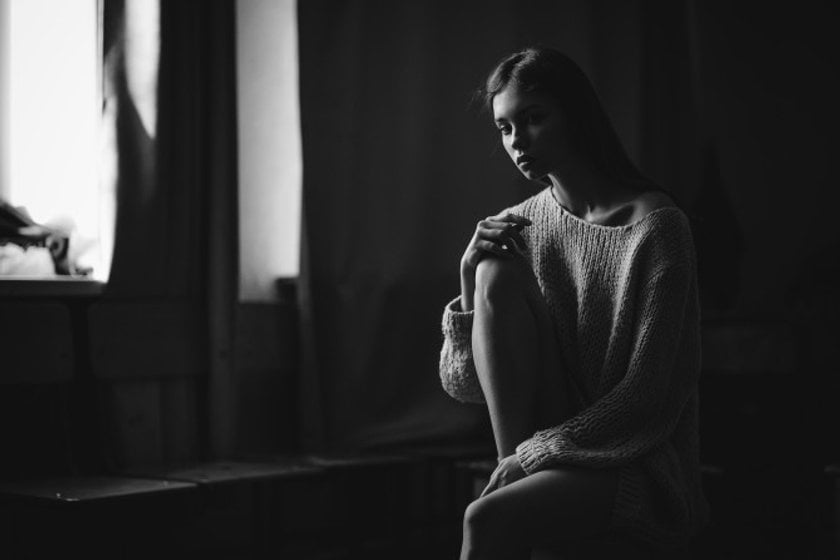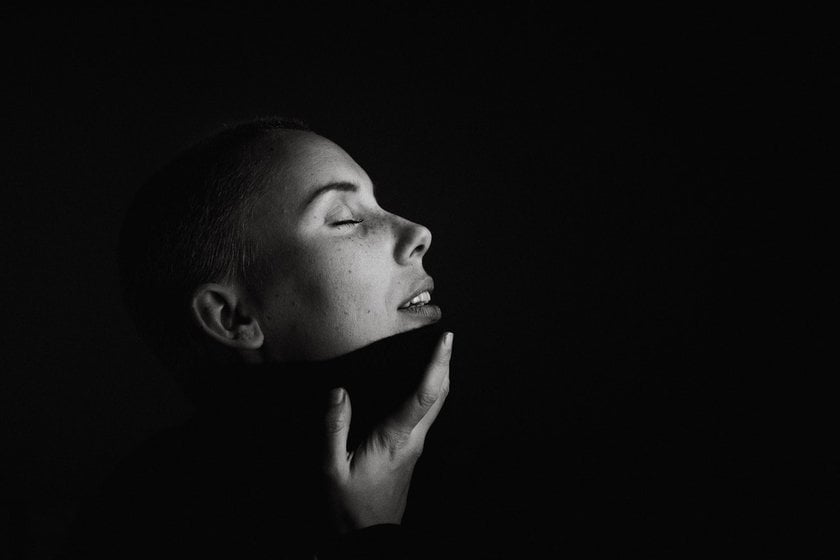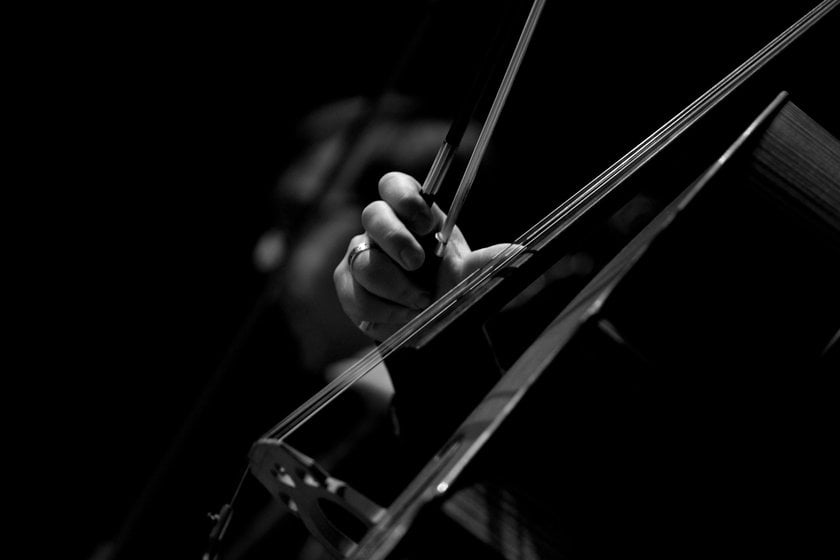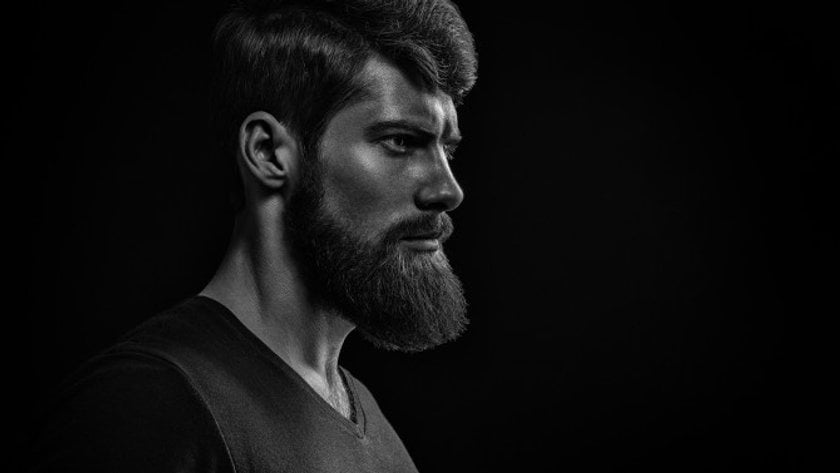How To Put A Black Background On A Picture In 5 Minutes
June 20, 2023

In this article, we give you a couple simple and inexpensive techniques for how to get that studio black background look in your photos (without being in a studio).
Creating a captivating black background in your photos doesn't require a studio setting. Here we will explore the most effective techniques to achieve that desirable black backdrop look. But first, let's take a moment to appreciate the importance of a blacked out background in photography.
These kinds of photos have gained immense popularity, especially on social media platforms. A black backdrop adds a touch of elegance, drama, and focus to the subject. It allows the subject to stand out and creates a visually striking image. This technique offers versatility and can be used in various creative ways.
Even if you have little to no experience, you can master the art of implementing your black background ideas into life. Whether you're photographing people, objects, or nature, adding a black background can take your photos to the next level. Let's dive into the tips and become experts in capturing stunning black background photos!

What Are The Most Effective Ways To Create A Black Background?
First and foremost, to maximize the quality of your photoshoot, prepare your subject in advance. Ensure you have a subject or object ready to be captured. Consider the size, color, and texture of your subject to ensure it stands out effectively. By planning and preparing, you can make the most of your photography sessions.
Black Backdrop
Using a black backdrop for photography is one of the most straightforward ideas to create a black background. It provides a solid, non-reflective surface against which your subject can shine. By using a black backdrop and careful lighting, you can create a sense of depth and contrast that draws the viewer's attention to the details and textures of the objects.
A black backdrop can be as simple as a large piece of black fabric or a dedicated black backdrop specifically designed for photography. Whether you're capturing food, jewelry, or everyday objects, a black backdrop can add a touch of elegance and sophistication to your compositions. The key is to ensure that it’s smooth and free from wrinkles or creases that can distract from the subject.
Also read: What Are Megapixels And Their Impact On Photo Quality
If you don't have access to a black backdrop, you can create one using everyday objects like furniture, blackboards, or bed sheets. These simple materials can serve as convenient backdrops for capturing subjects indoors, are cost-effective and allow you to practice capturing various subjects in front of a black background.
Search for Black Backgrounds Outdoors
Nature offers a wealth of opportunities for finding captivating black backgrounds. Pay attention to your surroundings and search for interesting shadows, shaded areas, or natural elements that can serve as black backgrounds.
On a sunny day, explore the interplay between sunlight and shadows from buildings, trees, or other objects. The long shadows cast on the ground can create visually stunning black backgrounds. By capturing subjects against a shaded area or the night sky, you can create stunning images with a black background.
Experiment with different times of the day to capture the perfect intersection of sunlight and shadow. With the right subject and lighting, you can create mesmerizing black background images in the great outdoors.

Adjust Exposure Settings
How to get a black background, if you don’t have a backdrop? Proper exposure settings can help. When shooting in manual mode, you have full control over your camera settings, allowing you to customize them for the desired effect.
- Start by setting your ISO to the lowest level possible. This reduces the camera's sensitivity to light and helps prevent noise in your images.
- Consider the depth and dynamic range of the image. Understand the lighting conditions and how they affect the tones and textures of the subject. Adjust the power and direction of the light source to create a balanced interplay between light and shadow. By carefully managing the depth and dynamic range, you can capture captivating black background portraits.
- Select an aperture of around f/5.6 to maintain a balance between depth of field and light control.
Adjusting these black background photography settings appropriately ensures that the background remains dark while properly exposing the subject. Luminar Neo can be a valuable tool for adjusting exposure settings and enhancing your black background photography during post-processing.
Increase Shutter Speed
Another effective technique for achieving a black background is to increase the shutter speed. By using a fast shutter speed, you can minimize the amount of light that enters the camera, resulting in a darker background.
Also read: Best Photo Editing App for PC
This technique is particularly useful in situations where there is ample light or when using a flash to illuminate the subject. Experiment with different shutter speeds to find the optimal setting that achieves the desired level of darkness while still properly exposing the subject.

Use A Black Reflector
A black reflector can be a powerful tool in creating a black background. By strategically placing a black object or surface near the subject, you can absorb any unwanted light and create a stronger contrast with the background.
This technique helps prevent light from bouncing back onto the subject and ensures that the background remains dark and visually appealing. Experiment with different sizes and angles of black reflectors to find the best setup for your specific photography needs.
Spot Metering Mode
Spot metering mode is a valuable feature available on many cameras that allows you to measure the exposure based on a specific area of the frame. When working with a black background, spot metering can be particularly useful in ensuring that the subject is properly exposed while maintaining a dark background. By using spot metering on the subject, you can adjust the exposure settings to accurately capture the details and tones of the subject while keeping the background dark and dramatic.
Use A Flash
The flash can be a versatile tool in creating a black background. By using a flash, you can separate the subject from the background and add creative opportunities to your photos. The flash enables you to improvise with angles, highlight specific areas, and enhance brightness in your photos. You can also control the lighting and create dynamic effects.
Also read: Best Photo Editing Software for Beginners — Free, Trial, and Paid
When creating a black background with flash, it's essential to consider the positioning and angle to avoid introducing unwanted elements into the frame. Experiment with different flash settings, such as adjusting the power or using diffusers, to achieve the desired lighting effect. The flash can add a touch of brilliance and create stunning visual contrasts against the dark background.
Post Editing Software
Even with the best techniques and settings, post-processing can further enhance the quality of your black background images. Software like Luminar Neo offers a wide range of tools and features specifically designed for photo editing. Let's explore some post-processing techniques you can apply using Luminar Neo:
- Adjust Contrast and Shadows. One of the primary goals in post-processing black background images is to enhance the contrast and shadows. Luminar Neo offers various adjustment tools that allow you to fine-tune these aspects. Increase the contrast to make the subject pop against the dark background, and adjust the shadows to add depth and richness to the image. Carefully balancing these adjustments will help you achieve a visually striking black background composition.
- Selective Brushing and Editing. Luminar Neo provides precise editing capabilities through selective brushing. This feature allows you to apply adjustments selectively to specific areas of the image. Use this tool to refine the details of the subject or further darken the background while maintaining the desired level of darkness. Selective brushing helps you create a seamless and well-balanced black background image.
- Background Removal and Replacement. Luminar Neo's background removal tool offers a convenient way to modify or replace the background of your images. If you're not satisfied with your existing black background or want to explore different options, this tool allows you to replace the background easily. Experiment with different backgrounds to find the perfect match for your subject and desired aesthetic.
Luminar Neo is a versatile and user-friendly editing software that empowers photographers to bring their creative vision to life. Whether you want to fine-tune the contrast, selectively edit specific areas, or completely change the background, Luminar Neo provides the necessary tools to elevate your black background photography.
Also read: What Is a JPEG Format? How to Open JPEG On Any Device
Advanced yet easy-to-use photo editor
Get Luminar Neo NowPlay With Shadows
Silhouettes and shadows can be powerful tools in black background photography. Embrace the interplay between light and darkness to create intriguing compositions. By skillfully positioning the light source, you can create captivating shadows, adding depth and visual interest to your images.
Experiment with different lighting angles, intensities, modifiers, and backlit scenarios to capture striking silhouettes and to achieve the desired shadow effect. The contrast between the subject and the black background will add depth and visual interest to your images. So one of the answers to: “How to make the background dark?” is – by playing with shadows, you can create a sense of drama and mystery in your black background photos.
Lower Your ISO
Keeping the ISO level low is crucial in achieving a clean, noise-free black background. Higher ISO values can introduce unwanted noise and graininess to your images, which can detract from the overall impact of a dark background. By keeping the ISO at the lowest level possible, you ensure that the camera's sensitivity to light is minimized, resulting in a cleaner and more visually appealing black background.
Green Screen

For more advanced techniques and creative possibilities, the use of a green screen can be beneficial in creating black backgrounds during post-processing. By shooting the subject against a green backdrop and using photo editing software like Luminar Neo, you can easily replace the green background with a black one. This technique provides flexibility and allows you to experiment with different background options without the need for physical backdrops.
With these tips and techniques, you're well-equipped to embark on your journey to master black background photography. Remember to experiment, push your creative boundaries, and have fun along the way. Black background photography offers endless possibilities for artistic expression, and with the assistance of Luminar Neo, you can elevate your images to new heights.
In conclusion, creating a captivating black background doesn't have to be limited to a studio setting. By using techniques such as adjusting exposure settings, increasing shutter speed, using a black reflector, utilizing spot metering mode, employing a flash, leveraging post-processing software like Luminar Neo, playing with shadows, lowering your ISO, and exploring green screen options, you can achieve stunning black background images.
With the outlined tips, you're now equipped to confidently embark on your black background photography journey. Embrace your creativity, experiment with different approaches, and let the beauty of black background photography shine through in your images.







